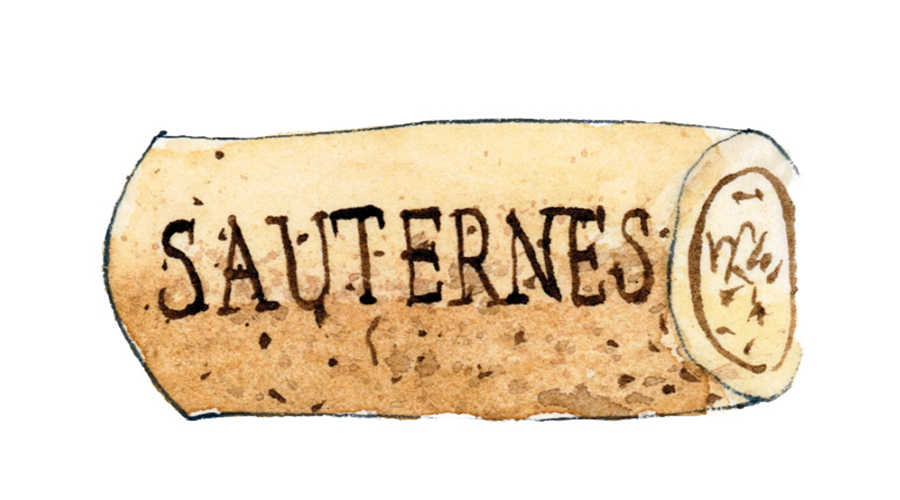Reasons to drink sweet wine this Christmas
Author: Issariya Morgan

From the dried-fruit flavours of Port to the honeyed notes of Sauternes, Christmas is the perfect occasion for sweet wines. In our short collection of stories and advice, Alexandra Gray de Walden reminisces on fond memories; and Clara Bouffard imparts her top food-matching tips.
A season of decadence
For Alexandra Gray de Walden, Christmas means snuggling up in front of a roaring fire, with a golden glass of Sauternes in hand.
Christmas pudding, chocolate coins, cranberry sauce oozing over turkey breast; sweetness runs through Christmas like carols and mince pies. From exuberant and energetic demi-sec Champagne to moreish and complex after-dinner Port, there’s a sweet wine to accompany every Christmas occasion.
Yuletide festivities are awash with decadence, indulgence and richness – and sweet wines fit the bill perfectly. Take a golden, luscious glass of Sauternes: full of honeyed citrus peel and orange blossom, it’s a perfect physical representation of Christmas, with its opulent colours, aromas and seasonal sparkle.
Sweet white pudding wines such as Sauternes and Barsac are a perfect match for your after-dinner cheese board, particularly the rich and pungent Epoisses and Roquefort – the combination of sugar and salt is as harmonious a match as sweet and sour. For those of us with a sweeter tooth, let’s not forget the treacle-like viscosity of a Pedro Ximénez Sherry, drizzled liberally over vanilla ice cream – a Spanish twist on a British classic.
But the true joy of any wine comes from the event, the sense of occasion and the company in which it is shared. My happiest memories of sweet wines at Christmas are snuggling with the family dog on a well-worn sofa, savouring a honeyed glass of Sauternes in front of a roaring log fire. It’s about true quality time spent with special people – and special wine.
How to serve sweet wines
Henrietta Gullifer outlines the key things to bear in mind when pouring sweet wines throughout the season.
Whether you love a delicate off-dry Riesling, a honey-soused Sauternes or a sticky Vintage Port, there tends to be a sweet wine for everyone. Personally, I’m a big fan of a sweet Tokaji – even more intense than a Sauternes but with a fantastic, refreshing acidity. It’s a truly special treat.
When considering a sweet wine, the first question is: when do you serve it? You have several options, the most obvious being with dessert. For instance, a Pedro Ximénez Sherry alongside Christmas pudding makes a beautiful match, with those dried-fruit flavours complementing each other. But increasingly, there’s a greater awareness that sweet wine is not just for dessert. Whether you’re pairing Port or Sauternes with cheese, or a sweet Riesling with a seafood starter, sweet wines can be served at various point in a meal.
Often, we tend to serve sweet wine too warm. Ideally, it should be served at 8-10°C, but straight from the fridge will also work perfectly. This prevents the wine from tasting too cloying. The exception to this is Port: serving it too cold would exacerbate the tannins and dull the fruit, yet I still wouldn’t serve Port too warm.
How to pair sweet wine with food
Sweet wine is often associated with dessert, but the truth is that these wines are incredibly versatile. Clara Bouffard shares some helpful tips for food-matching sweet Bordeaux.
Traditionally, sweet-wine pairings with food have been limited to foie gras or dessert. But Sauternes actually has incredible gastronomic versatility, with a delicate balance between sweetness and acidity, earning these wines a place at the dinner table.
I adore sweet wine throughout the year – but I believe Christmas food is perfectly suited to the rich, indulgent flavours of a Sauternes, Cérons or Loupiac. In France, they’re rarely consumed as dessert wines; one can opt to enjoy a glass with a starter, such as foie gras, salmon or oysters. The sweet and savoury combination is just right for a perfectly balanced mise-en-bouche.
Yet the versatility of sweet wines goes beyond the apéritif. They would be a superb match for meats such as turkey, guineafowl or roasted pork, as well as sautéed Grenaille potatoes or truffled mashed potatoes. I would also seriously recommend pairing them with a blue cheese, or a Comté aged for at least 30 months.
The key is contrast and balance. And the beauty is that, once opened, a bottle will easily keep for three weeks in the fridge. With desserts, best practice is to avoid pairing wines with anything too rich or too sweet. Fruit-dominant desserts, such as a lemon meringue tart, will perfectly balance the sweetness and acidity.
Serving Sauternes on ice with a slice of orange, or as part of a cocktail, is a more contemporary approach – a local favourite becoming widely adopted in Sauternes, where hospitality and wine tourism are growing.
Explore our selection of fortified and sweet wines here


